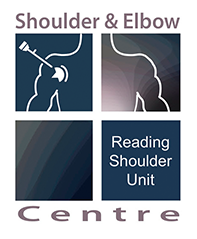Cementless Surface Replacement Arthroplasty (CSRA) of the Shoulder in Young Patients of 50 Years Old or Less
Introduction: Treatment of arthritic shoulders by shoulder arthroplasty in young patients is challenging. Worse and less predictable results than in older patients have been described in this group. Loosening and the potential for revision surgery are of substantial concern. We reviewed our experience with Copeland Cementless Surface Replacement Shoulder Arthroplasty (CSRA) in young patients of 50 years old or less.
Methods: Between 1988-1998, 31 CSRA (18 hemiarthroplasties and 13 total shoulder arthroplasty) were performed in 29 patients, 16 females and 13 males. 2 bilateral procedures were performed. Preoperative diagnoses were 15 rheumatoid arthritis, 9 avascular necrosis (AVN), 4 instability arthropathy, 2 for fracture malunion, and 1 arthropathy post-septic-arthritis. Mean follow-up 6.5 years (range 2-12 years). Average age at operation 37.8 years (range 24-49 years). The patients were reviewed clinically using the Constant score and patient satisfaction score, and radiographically.
Results: Best results achieved in the AVN group with mean Constant score of 85.7, instability arthropathy 75, post-fracture malunion 64.5, rheumatoid arthritis 61.4, and post septic arthritis arthropathy 38. Active elevation improved to an average of 146° for AVN, 135° for instability arthropathy and 97° for RA, 120° for posttraumatic arthropathy and 100° for post septic arthropathy. 93.5% of the patients considered their shoulder much better or better due to operation. Radiographically, 93.1% (27/29) humeral implants and 27.3% (3/11) glenoid implants showed no lucencies. Only 2 humeral but 72.7% (8/11) glenoids showed partial lucent line (1 mm). No lucencies were observed in the hydroxyapatite coated implants. 5 patients required re-operations: 2 arthrodesis due to infection and persistent instability. In one patient with Mark 1 prosthesis, the screw had to be removed. One patient had a severe fall and fractured the humeral head at the margin of the humeral cap; this was revised to a stemmed prosthesis. One patient had rotator cuff repair.
Discussion and conclusion: Copeland cementless surface replacement shoulder arthroplasty (CSRA) provides good midterm results in young patients. Furthermore, by using this prosthesis, which differs from stemmed prostheses, all options for possible future revision surgery are preserved should the need arise, as all bone stock is maintained. It therefore has advantages over a stemmed prosthesis, especially in the treatment of young patients.
